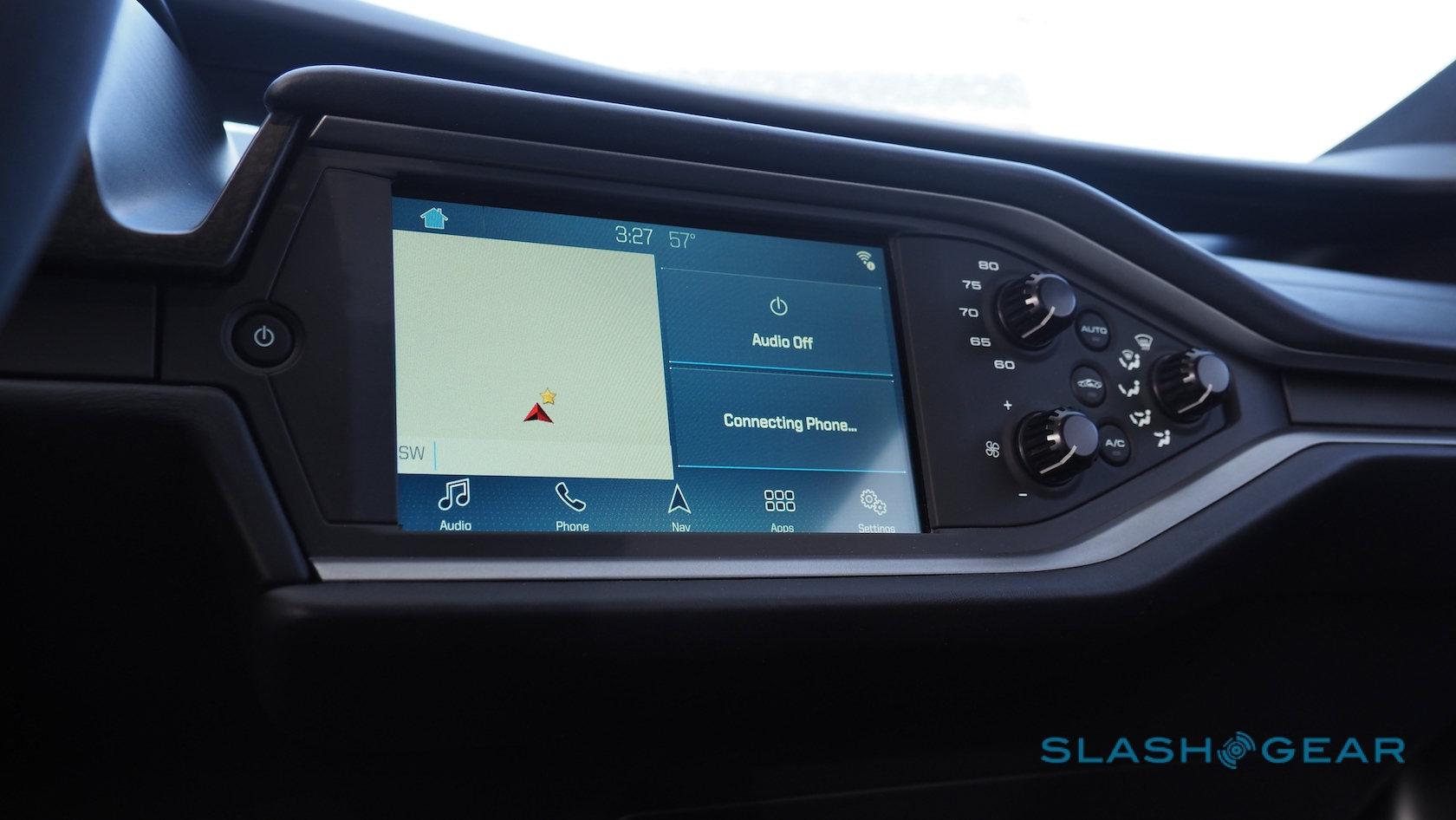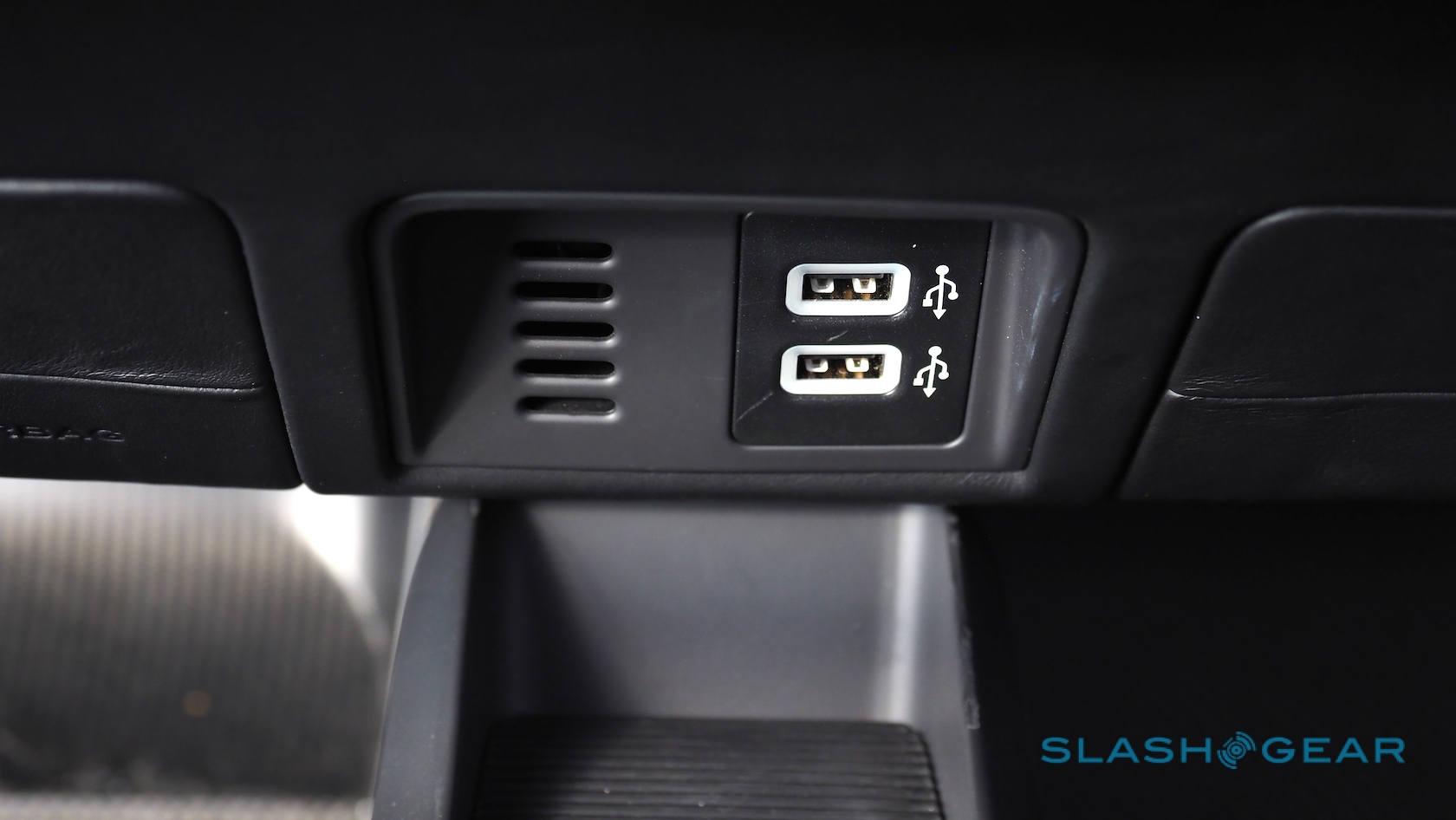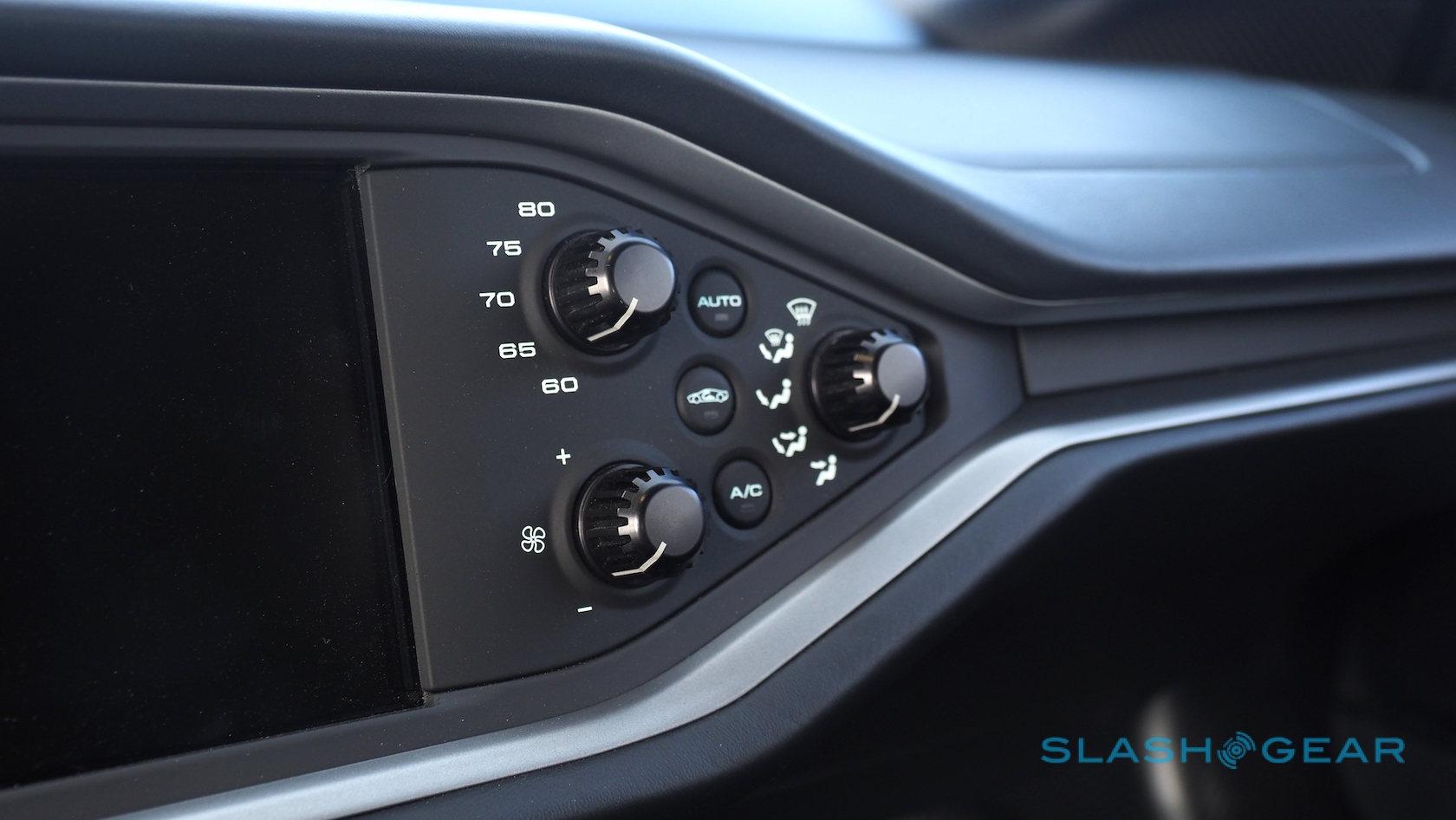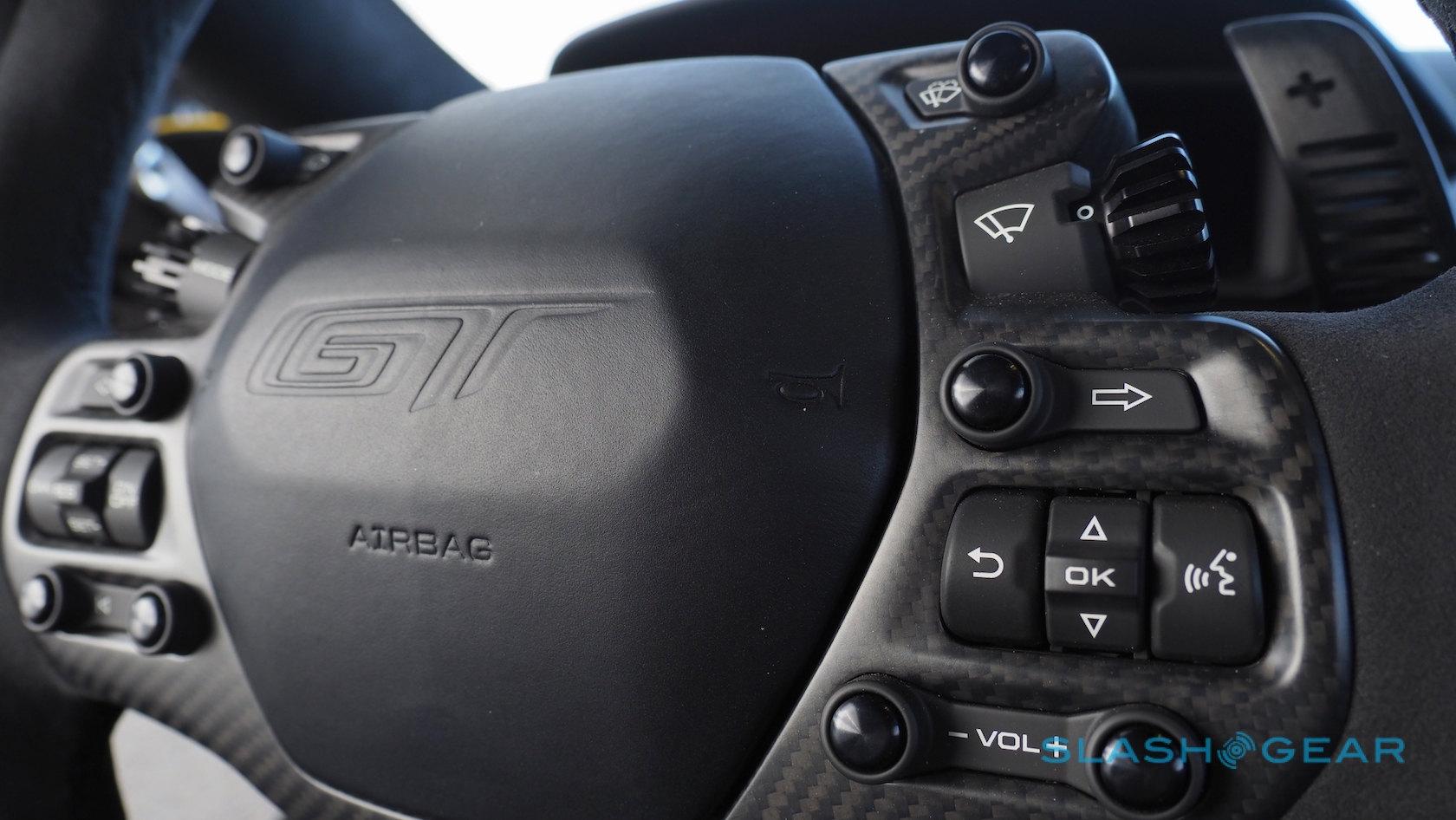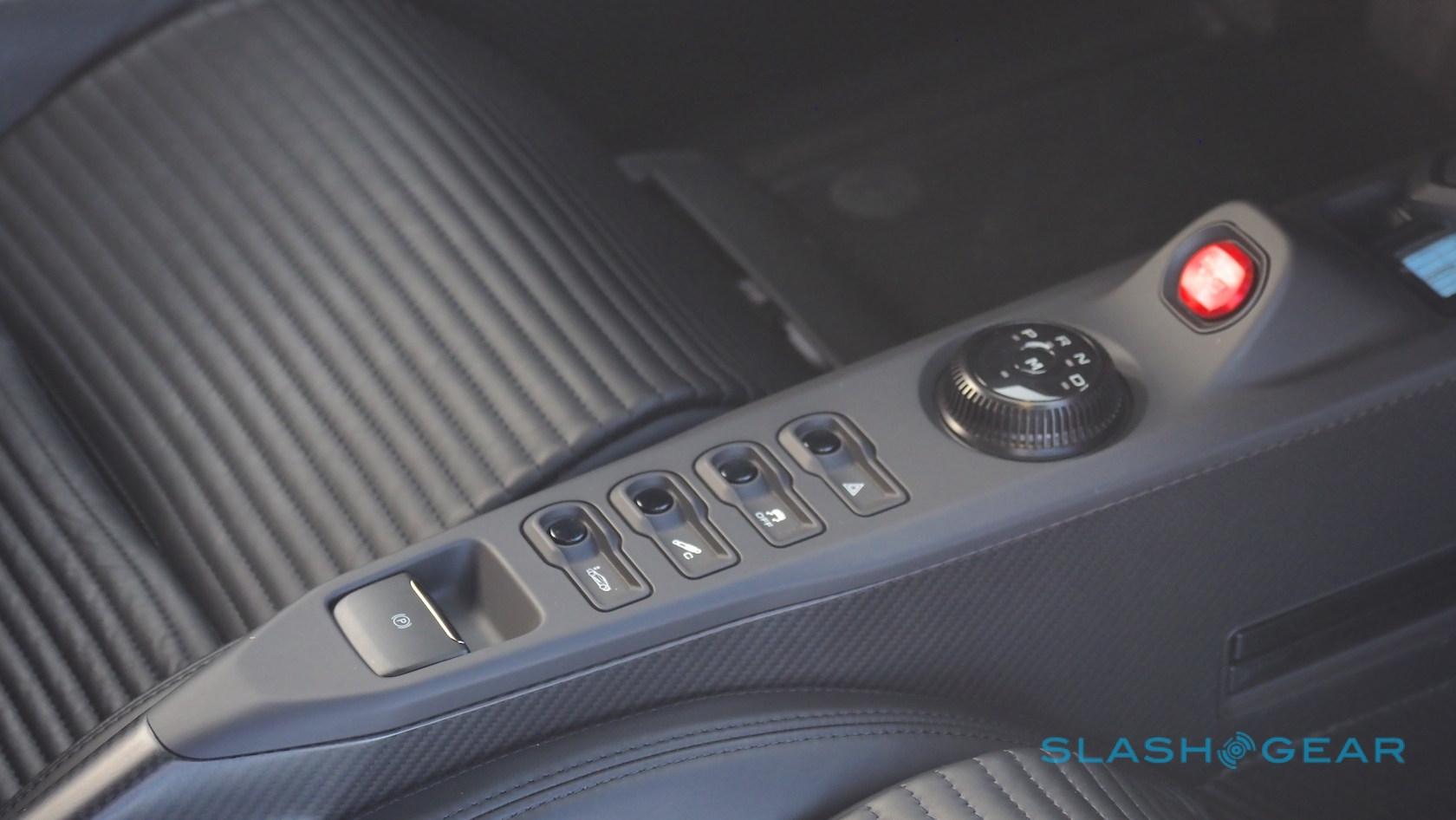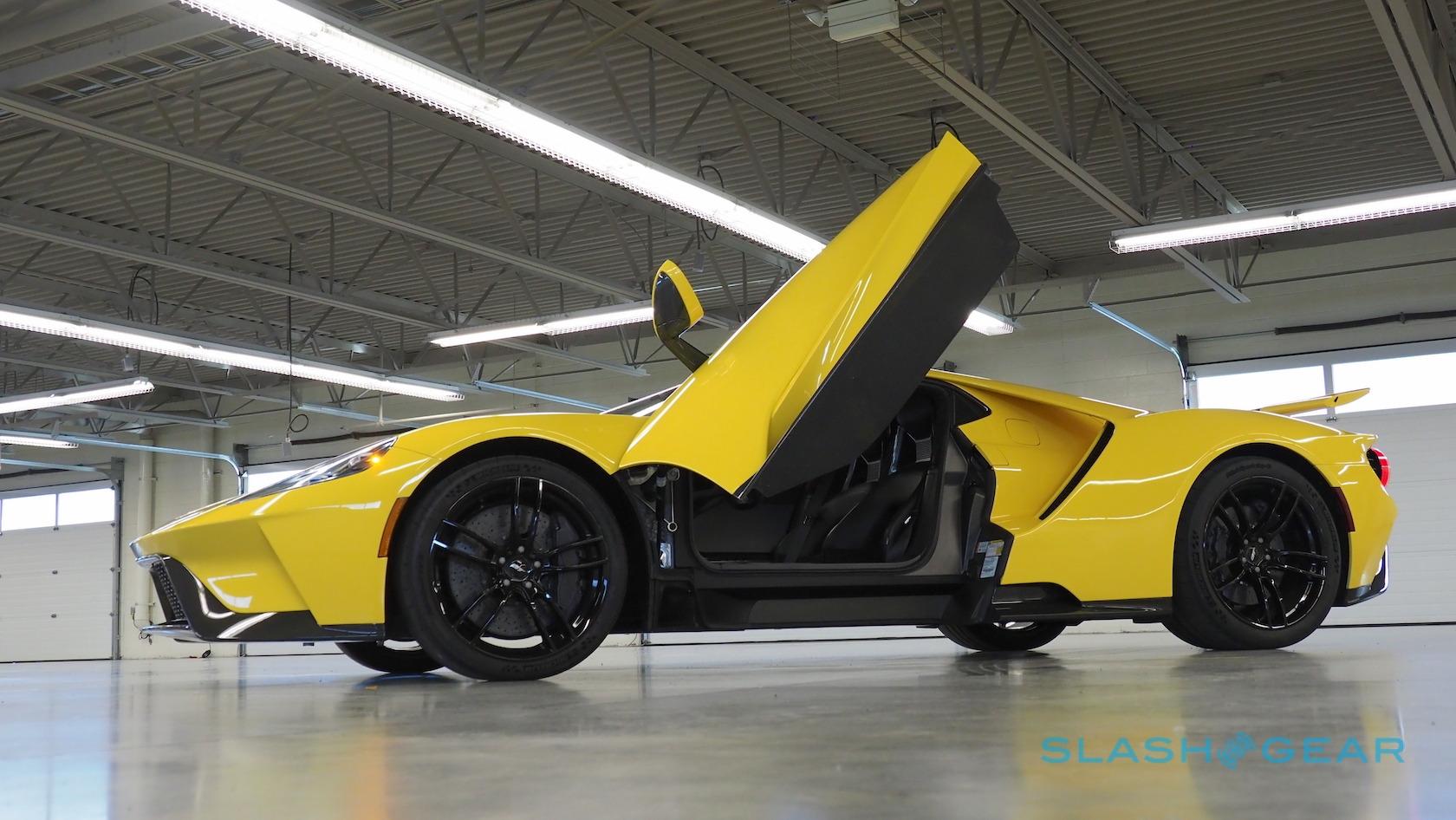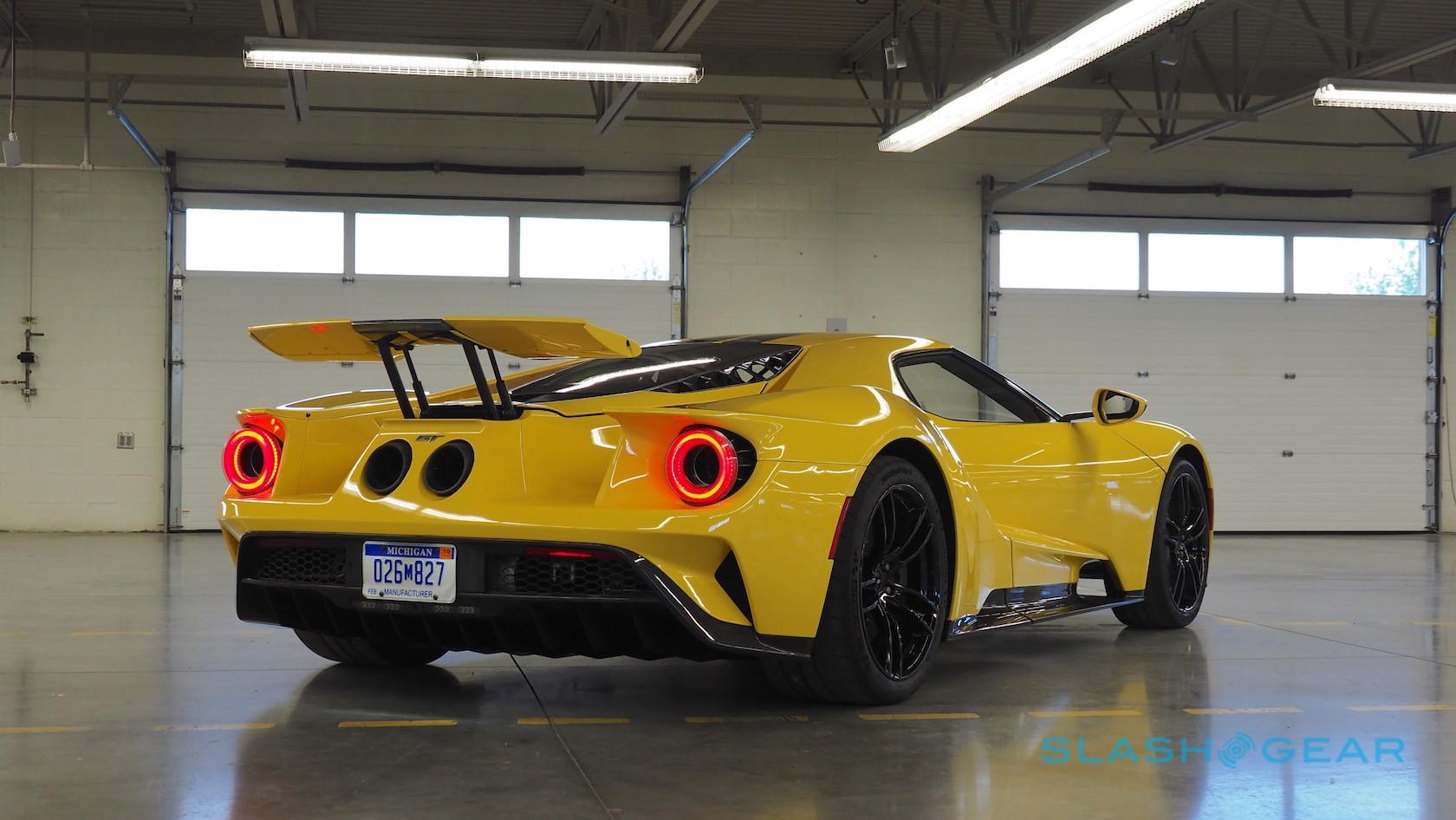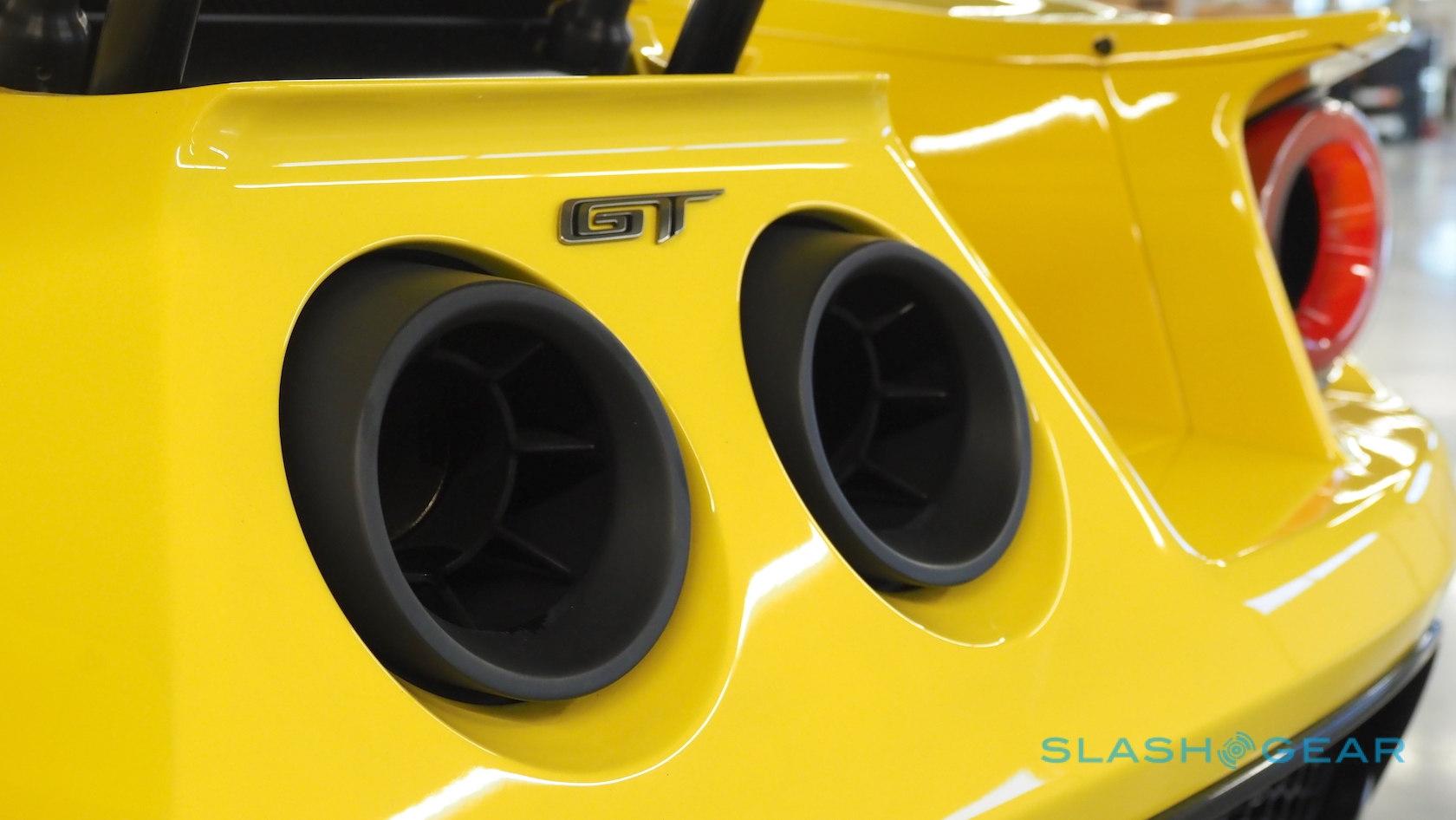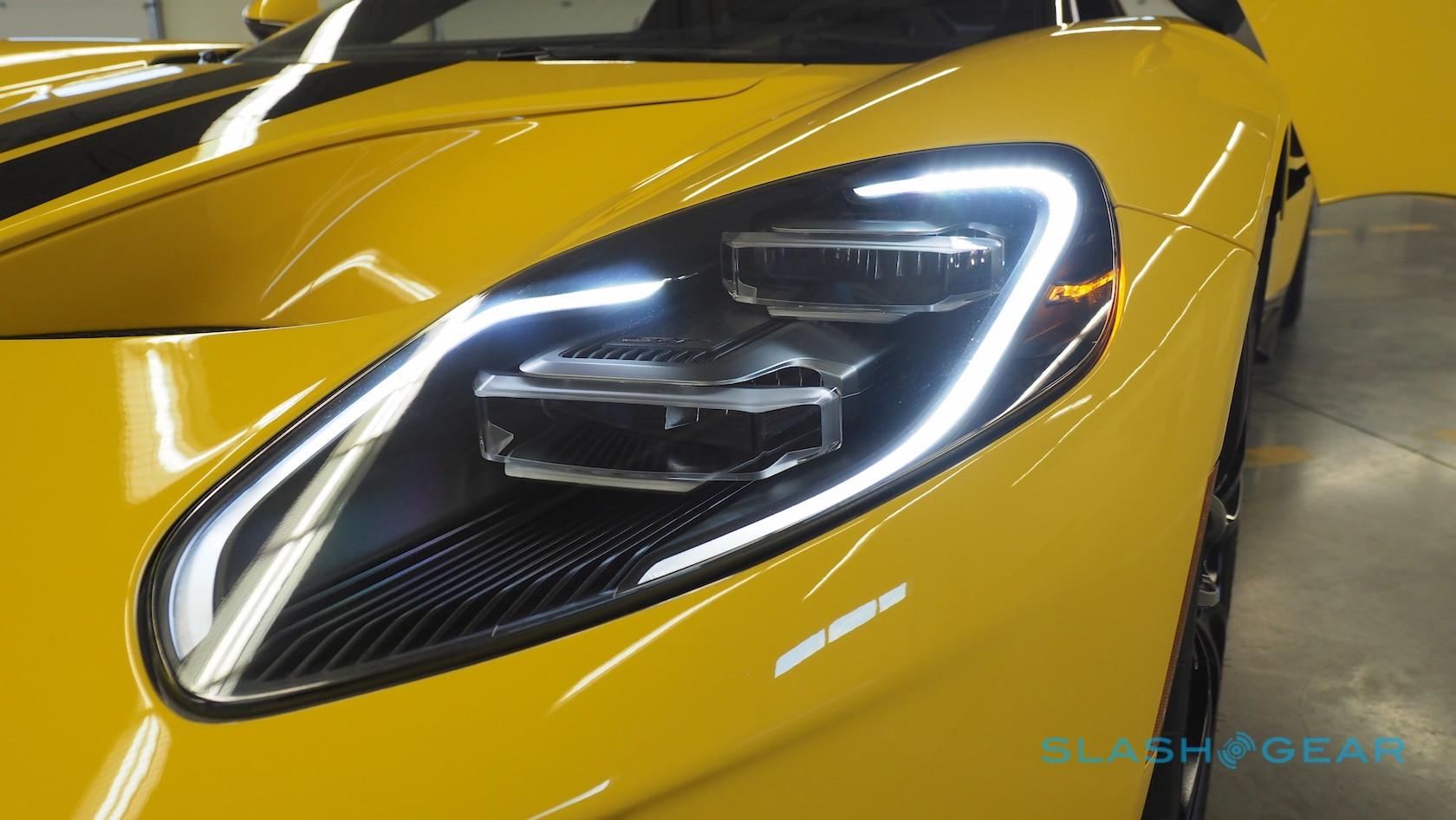2017 Ford GT First Drive: When Brute-Force And Beauty Collide
There are few moments in life so memorable that they burn deep into every single fiber of your body. For me, one such moment came the first time my index finger pushed up against the 2017 Ford GT's ignition start button. Two years after the GT's shock unveil at the 2015 North American International Auto Show, the build-up of anticipation until I was behind the wheel and seated inches in front of the mid-mounted 647 horsepower, 550 lb-ft of torque twin-turbo EcoBoost V6 engine could've gone one of two ways. As the hardly-tamed beast roared to life, would the GT live up to its supercar promise?
To understand the new GT properly, you first have to go back. Far further into the history books than this car's unexpected Detroit reveal, and all the way to the 1960s and the original Ford GT40. A Le Mans winning middle-finger from the American automaker to its European rivals, it earned a place in the history books, and how. Ford resurrected the name in 2004 with the first-generation GT, making just over 4,000 of a car that clung so closely to the original's appearance that it bordered on the pastiche.
Nobody could accuse this, the second-generation GT of being retro. Sharing nothing with the first-gen car but its name and a few aesthetic cues, its inspiration isn't so much in design or engineering as it is ethos. Just as the original GT40 was intended to coax the best of American ingenuity into a racetrack-storming Ferrari-squasher, the 2017 GT pits the pinnacle of 21st technology up against a classic nameplate for a thoroughly modern, no-compromise supercar.
Jab that milled metal starter button, and all your senses are assaulted at once. This moment for me was existential. I took a deep breath to allow everything to soak in, knowing that I've spent my entire career – and especially the past week – preparing for it.
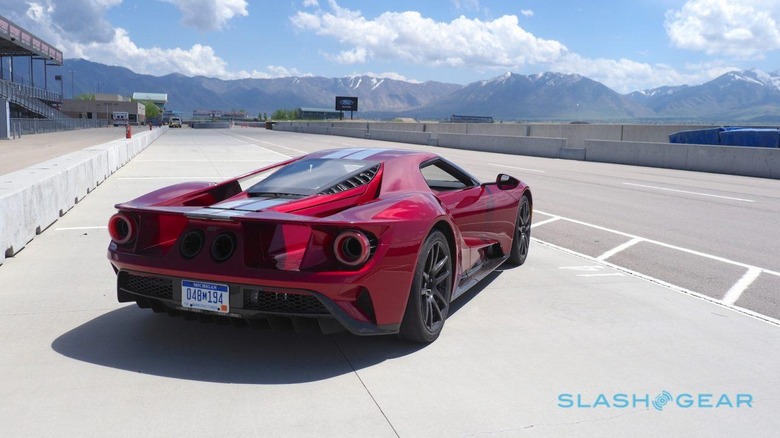
Existentiality doesn't get you far on the track, though, so the practical rushes in to replace it. Normally, I'd start with adjusting the seats but in the GT they're fixed to the carbon fiber tub. Instead, the pedal box extends forward or back, the equivalent of wearing a suit that's been tailored just for you. With curb weight at the forefront of their collective mind, the engineers bypassed the electric motors you'd expect to find making the adjustment in a "luxury" supercar, opting instead for a simple pull-cord mechanism.
That efficiency carries over to adjusting the steering wheel. It's a two-step process: a lever under the steering column allows for forward and back movement, and then once it's where you want it, a lever on the right allows for finer tilt adjustments. The bottom of the wheel itself is flat and, short of the paddle shifters, every single control – including the left and right blinkers – lives on its compact body. According to Christopher Svennson, design director for Ford Motor Company America, the whole thing was "modeled after a racing wheel," where the primary focus is keeping the driver's hands in place.
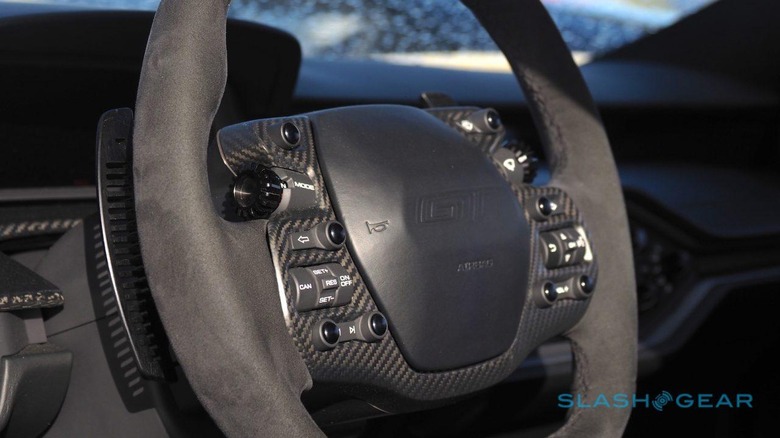
Out on public roads, the results of that focus takes a little getting used to. When you go to make a turn, your fingers automatically reach for an indicator stalk; you need to retrain them to jab one of the small, round blinker buttons with your thumb instead. It's a little strange to see mundane controls like the windshield wash given pride of place on the wheel, but it does give the beautifully milled, curved paddle-shifters the spotlight they deserve.
It's one small detail, but it's an example of the degree of obsessive consideration Ford paid to every aspect of the new GT's design. Weight cuts are another instance, the engineers having considered the possibility of paring back everything they could in the chase for minimal mass, yet discovering in the end that sometimes it pays to add weight in order to maximize performance in the end. Indeed, just opting for minimal weight ironically slowed the GT down.
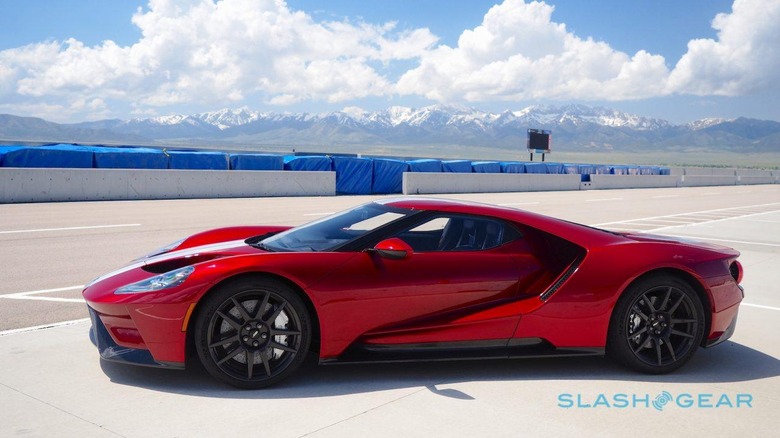
"The adjustable ride height adds weight to the car. It also makes the car faster," Jamal Hameedi, Ford Performance Chief Engineer explained to me. "We studied deleting the system saving significant weight and the car was slower, so a lot of these features, while they add weight to the car, they also make it faster. This is one feature where on a system level, moving the seat is lighter than having to move the steering column that much, as well as moving the pedal box. But again, that was critical enabler to get that frontal area down."
The most important control on the wheel is up on the left, an aluminum cog that switches through the drive modes. Each mode changes both the car's driving dynamics, and the appearance and information shown on the fully digital instrumentation. It's actually the 10.1-inch panel from the Lincoln Continental, but that's where the similarities end.
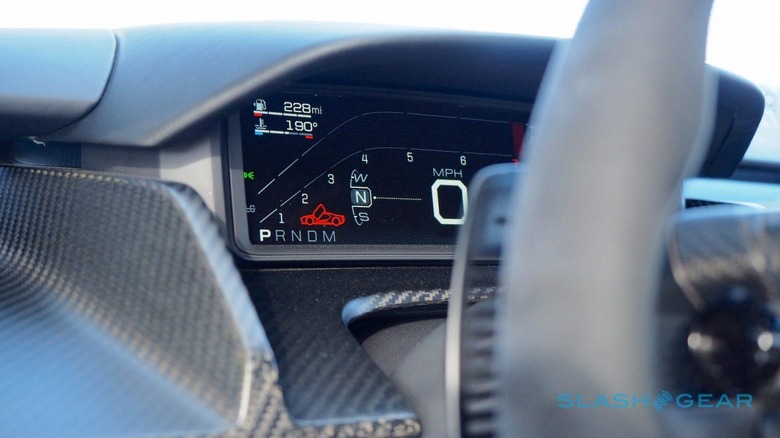
"We toiled hours and hours and hours on this display," Hameedi told me, "to the point where I got so tired showing up to these meetings, I never want to see another digital display just because we spent so much time on it." While the engineers could have added every bell and whistle and turned it into what Hameedi refered to as a "video game", that's absolutely not what Ford wanted to do. Instead, they took the minimalist approach, with only the most pertinent information making it to the surface for each of the five drive modes: Normal, Wet, Sport, Track, and V-Max.
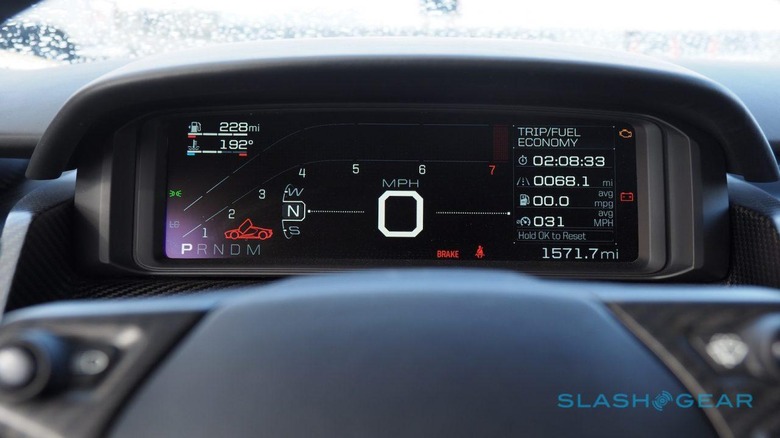
"V-Max is interesting because we came up with the mode, we never intended to have a V-Max mode," Hameedi revealed. "I think this is kind of a nod to the engineers over a beer or two... wouldn't it be cool to put the car in low ride height but not deploy the wing, to have the lowest drag setting. Just like the nose lift, it didn't cost anything more, it didn't add any weight to the car, but we're using the tools and the features on the car to create a new configuration."
In V-Max mode, speed is prominently placed in the center with critical temperatures and engine data on the right of the display. In track mode, there's an oversized gear indicator for the seven-speed PowerShift dual-clutch transmission. While out on the track, though I mainly stayed in 3rd and 4th gear, I did notice that even when unwinding out of a tight turn, with my eyes focused down the straight or searching for the corner, it was nonetheless easy to see the display out of my peripheral vision. Making it even easier, Ford put gear shift notification lights into the top of the steering wheel, a row of colored LEDs that come on when you switch to manual shifting.
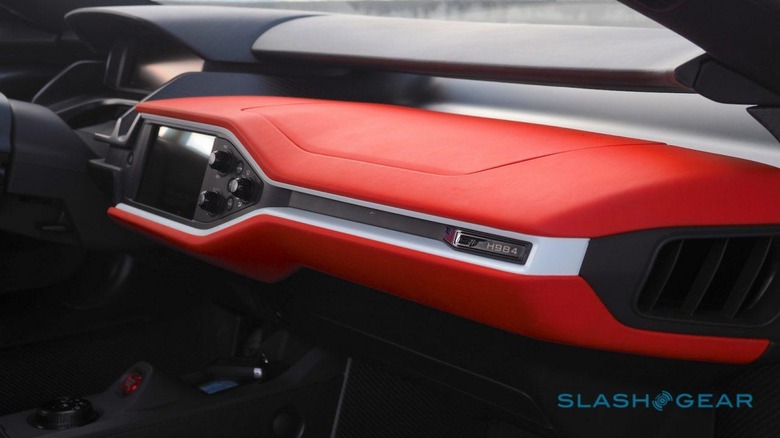
In Sport mode – which is more intended for road driving – the current gear remains prominent in the center, with the speedometer flanking it on the right. Finally, for Wet and Normal drive modes, current gear is pushed to the side, yielding its spotlight to the mph indicator. The overarching hockey-stick-style tach remains consistent through all the drive modes.
The rest of the cabin is near-brutalist in its simplicity. The dashboard itself is a narrow band that runs the width of the cabin, punctuated in the center with a 6.5-inch touchscreen running SYNC 3. It's easily reached by both driver and passenger, and offers the same navigation, audio, and app suite you'd be familiar with from an Edge or Focus. Two USB ports are underneath, along with a tray roughly the width of an iPhone or Galaxy S8.
Plug in an Android device and mount it on the windshield, and Ford's track app for the car will overlay driving and engine metrics on top of a first-person view for the camera. You'll be able to share those results on social media, too, as if having access to a GT in the first place wasn't bragging-rights enough.

Physical knobs control the HVAC system, again milled out of metal. However, keeping the cabin cool presented a problem, since there was virtually no room in the car to snake the ducting. Cleverly, the engineers integrated the necessary pipework directly inside the molding of the carbon fiber tub, eliminating additional parts and weight in the process.
Aerodynamics defined the shape of just about everything. The cockpit has an extreme front-to-rear taper, Svensson explained. To keep airflow adhering to the fuselage without becoming turbulent. The subsequent teardrop shape meant keeping the seats fixed – not to mention low down in the body – was the only option for maximum interior space. You're sitting shoulder to shoulder with the person next to you.
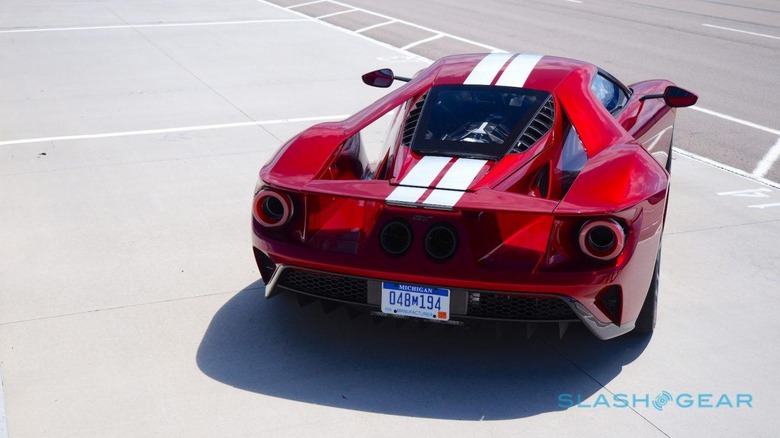
You won't care, just like I didn't, because the vista ahead of you is panoramically awesome. The A-pillar is almost non-existent, unlike in the first-gen GT, and taking one tight turn is all you'll need to immediately appreciate the meticulous care that Ford put into this design. Back then, the A-pillar was an extruded aluminum section; now, it's part of the integrated roll cage – composed of tubular high-strength steel – which is built into the upper cockpit. It meets both FIA and global road car safety requirements.
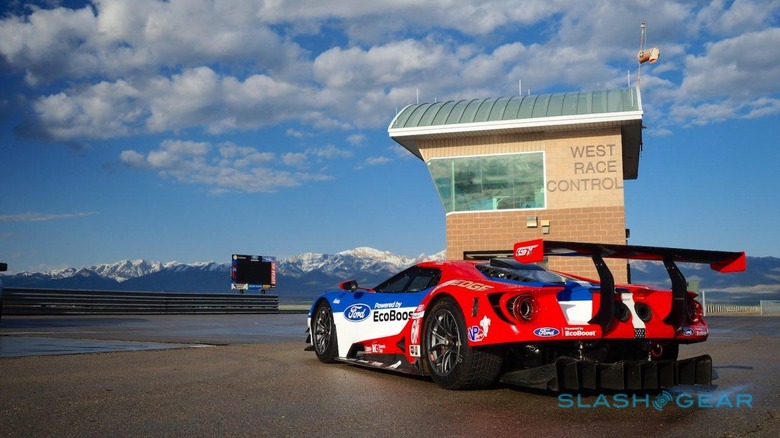
Why, you might be asking, would Ford want an integrated roll cage? It's another example of that perverse "adding something to remove something" strategy in the same vein as the adjustable suspension. As Hameedi explains it, the roll cage helps to cut down on redundant structure for the GT racer. Without the integrated cage, the GT racing car would have to double-up: it would get both the structure of the road car, in addition to racing safety hardware. Early on in the development process, Ford made the conscious decision to only use the FIA certified roll cage as the basis of the roof, for all GT production vehicles. "It adds a little bit of weight to the road car," Hameedi says, "but it makes the racing car much lighter."
The result is around 3,000 pounds, and all of it worshiping at the twin-altar of aerodynamics and suspension. They're "the two magical things about this car," Hameedi says, and I can't argue with him.
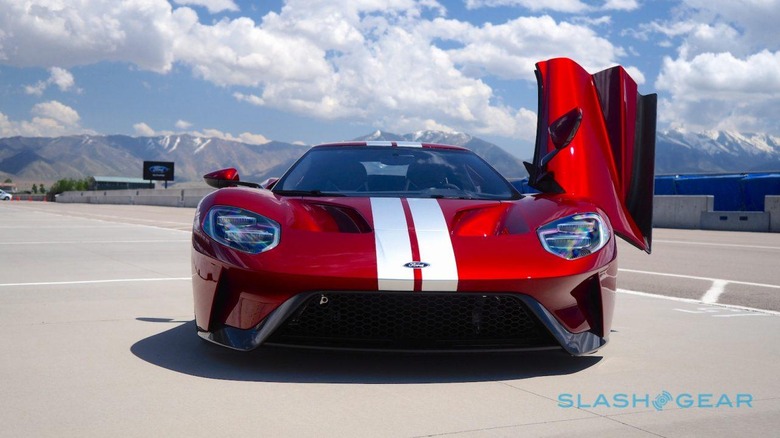
"We wanted to make the air flow," Hameedi explains, "and everything else followed after that." It starts with a front end inspired by the "keel-suspension" design found in Formula 1 and Le Mans cars. Like those racers, the GT uses unusually-long lower control arms to move the attachment points inboard, while the springs and dampers are packaged inside the car's body and actuated by pushrods. This leaves gaping voids on either side of the radiator to move air through the body and generate downforce.
The GT's pushrod-actuated inboard suspension, with its primary torsion bars and secondary coil springs, is fiendishly complex in turn. What it really boils down to is that, in Track mode, the car is nearly as low as the Le Mans-winning GT racer. Normal ride height offers 120mm ground clearance, while the low ride height is 70mm; the race car dips down to as low as 57mm. Since Le Mans drivers don't have to worry about speed bumps, the road-going GT has a very useful nose-lift feature: hit a button and, in a fraction of a second, the front of the car pops up to 170mm.
It was Track mode I selected as I took my place in the pits at Utah Motorsports Campus. The 2.2 mile course at the former Miller Motorsports Park is punctuated with a wide variety of challenging turns, an excellent foil to test the GT's promise of extreme stickiness on the asphalt. Then you plant your right foot, and any awareness of technology, engineering prowess, or wind tunnel shaping is blown from your brain.
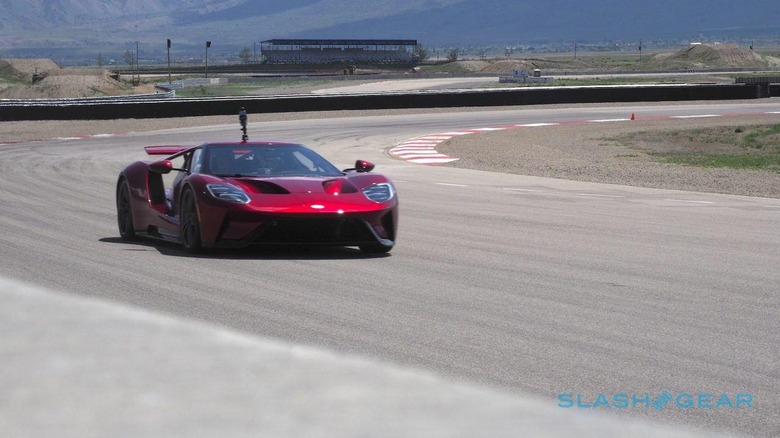
The Ford GT is quick, of course. Purists may have decried the decision to go with a smaller-displacement twin-turbo V6 rather than a big, naturally-aspirated V8, but frankly the latter woudn't have fit in the car. If it comes down to choice of compromising on "tradition" or not having the GT exist at all, I know what I'm choosing. Really, though, the V6 versus V8 argument is gloriously irrelevant.
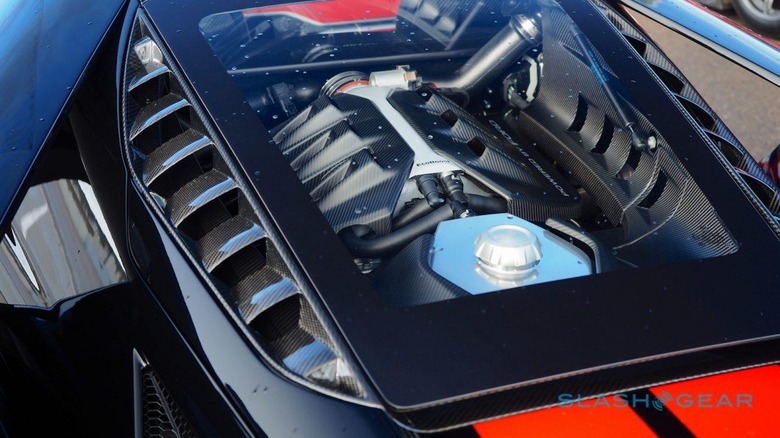
0-60 mph comes... fast. Ridiculously fast. Ford is only saying "under 3.0 seconds" and wasn't allowing any sort of time trial equipment to be used, but acceleration like a runaway cruise missile is more than sufficient to put numbers-on-paper out of your mind. At the same time, there's a jump-jet howl from the turbochargers behind you. The GT doesn't roar like a V8 might, it screams like an enraged banshee. As the LEDs on the wheel tick rapidly up to the redline the Valkyrie war-cry doesn't stint; it's almost a relief to snap the upshift paddle and feel the gearbox snick lag-free to the next ratio.
Then you're back on the throttle, and the whoosh of the twin-turbos as they gulp that carefully-channeled air begins all over again. Before you know it, you're stamping hard on the brake pedal and marveling as the carbon-ceramic brakes work in tandem with the active aero – the rear wing, which can crank up on two pleasingly-beefy looking pistons, flipping upright to act as an airbrake – to shed speed. No twitching, no jitter; no bucking side to side across the lane. Ford's achingly-refined downforce system sees the underside of the GT act as a massive vacuum, sucking the front axle to the track and sending you hurtling around corners like a particle round CERN.
Yet this is no computer-tamed version of speed and performance. Everything about the GT is communicative, and it glories in its mechanics. The steering – electromechanical, naturally – is heavily-weighted, piping details of every twist and ripple of the road back to your hands. Every spray of gravel as you risk more and more aggressive turn-in sends a staccato hiss through the cabin, the GT's minimal acoustic insulation holding little back.
That same rawness makes the car a challenge on public roads. At speeds far from stressing its V6, the GT proves nonetheless smooth if a heavy handful, but the arcane sculpting of its body means things like the flying buttresses or intercooler pods are a constant reminder in your mirrors that you're surrounded by $400k+ of exotic. There's a comfort mode, but its contribution is minimal.
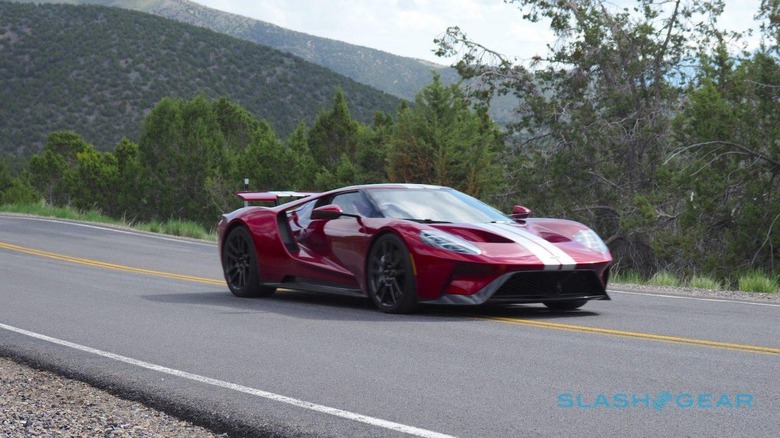
Not that you'd want to tame the GT. After my all-too-brief time with the car on the track, a ride-along with one of Ford's racing drivers underscored just how relentless the car can be. Yet even at its gory, howling best, the GT flatters: it wants to go fast, and it wants to help you go fast, and as long as you don't do anything stupid the two of you can drive like little else on the market.
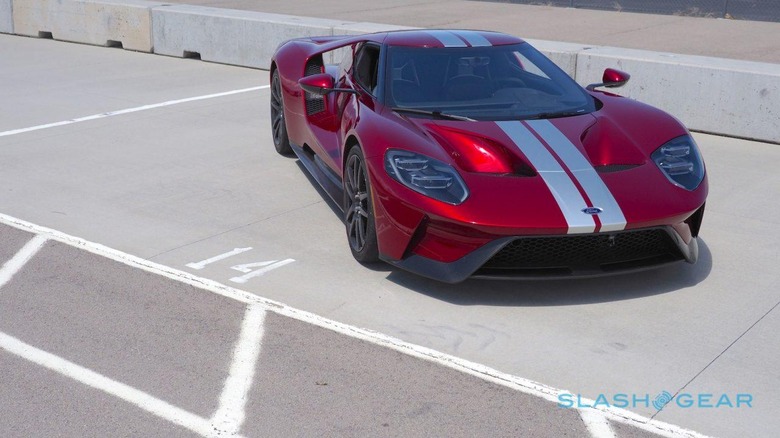
I hope, from the deepest depths of my envious soul, that those who buy the new Ford GT don't just leave it in their museum-garage. It may be striking to the eye, not to mention – with a final production run capped at just 1,000 cars – rarer than the Lamborghini Aventador S, McLaren 720S, and Ferrari 458 it's been compared to, but it would be a travesty not to see the fruits of Ford's labors prove their worth on the track. With three-quarters already accounted for, and competition likely to be fierce among those who can afford the sticker and convince Ford that they're suitable candidates for the remaining 250, I doubt I'll ever see one in the wild. No matter. It's a modern-day icon, a Le Mans-winning champion, and the halo car that puts Ford Performance on the map.
Photography by Chris Davies

